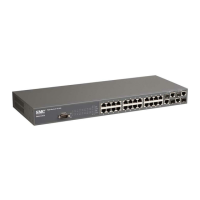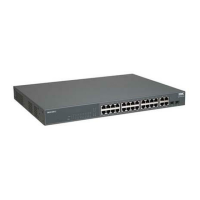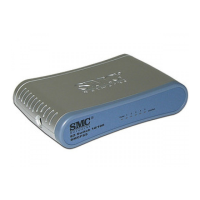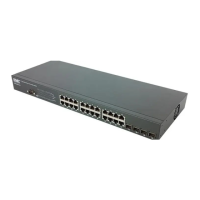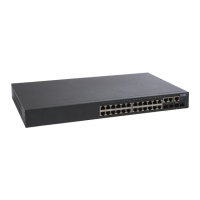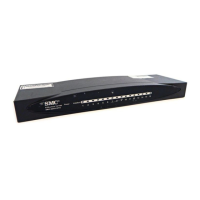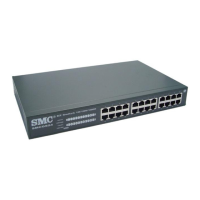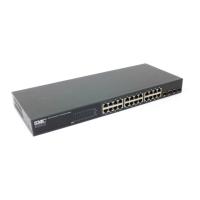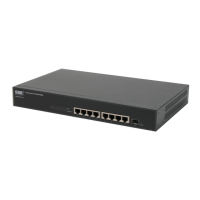A
PPLICATION
E
XAMPLES
2-5
Making VLAN Connections
These switches support VLANs which can be used to organize any group
of network nodes into separate broadcast domains. VLANs confine
broadcast traffic to the originating group, and can eliminate broadcast
storms in large networks. This provides a more secure and cleaner network
environment.
VLANs can be based on untagged port groups, or traffic can be explicitly
tagged to identify the VLAN group to which it belongs. Untagged VLANs
can be used for small networks attached to a single switch. However,
tagged VLANs should be used for larger networks, and all the VLANs
assigned to the inter-switch links.
These switches also support multiple spanning trees which allow VLAN
groups to maintain a more stable path between all VLAN members. This
can reduce the overall amount of protocol traffic crossing the network, and
provide a shorter reconfiguration time if any link in the spanning tree fails.
Figure 2-4 Making VLAN Connections
Note: When connecting to a switch that does not support IEEE 802.1Q
VLAN tags, use untagged ports.
Finance
Marketing
VLAN 3
Untagged Ports
VLAN
unaware
switch
Tagged Port
VLAN
aware
switch
Tagged
Ports
Finance
VLAN 3
R&D
VLAN 2
Testing
R&D
Testing
VLAN 1
VLAN 2
VLAN 4
VLAN 1
1
2
3
4
5
6
7
8910
11
12
13
14
15
16
17
18 19 20
21 22
23
24
37
38
39
40
41
42 43 44
45 46
47
48
25
26
27
28
29
30 31 32
33 34
35
36
Master
Select
Stack ID
45 46
47
48
Console
Pwr
RPS
Diag
Stack Master
TigerStack II
10/100/1000
8848M
Module
Stack Link
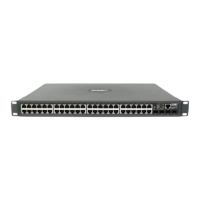
